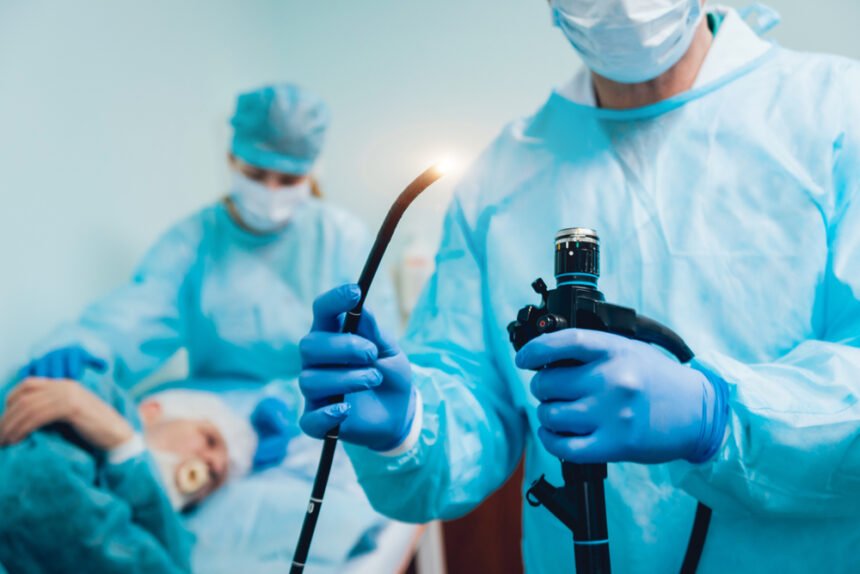We previously shared an update on a company that released a groundbreaking endoscopic machine. People are understandably more interested in hearing about these medical developments than talking about equipment maintenance. However, that is just as important to talk about.
It is no surprise that medical equipment needs to be cleaned before and after every use. Whether it is a simple scalpel, a high-tech robot arm, or even an endoscope.
Medical equipment maintainance is essential for safety. However, the procedure of cleaning and maintaining every piece of equipment is quite different depending on the use.
In layman’s terms, an endoscope is a long tube with a camera at the end. This helps doctors get a better view of internal injuries or diseases without having to perform major invasive surgery.
Endoscopes can be used for many purposes like performing biopsies or extracting polyps. Their frequent and diverse use is also why they need to be cleaned quite regularly to avoid any contamination or malpractice.
So we have curated the complete guide to endoscope maintenance below:
1. Check For Repairs Before Procedures
Before starting any procedure, there is a lot of preparation involved in getting an endoscope ready to use.
As endoscopes are often used in conjunction with other tools, there is a chance that these instruments may tear parts of the tube. This is why you should always check for any holes in the tube to make sure there are no leaks or tears that can hinder the upcoming procedure.
This can be done while putting the tube in water and cleaning it.
While every leak or hole doesn’t mean that the endoscope is unusable, it can quickly become a cause of problems. So professionals need to stay vigilant.
If you do find that you need to repair the endoscope, there are many options you can utilize.
For example, many repair technicians offer endoscope repair services and deal with every type of endoscope out there. You can also get trained online to fix an endoscope, however, this can be the wrong choice if there are problems with some of the more complex parts such as the camera.
2. Cleaning Process And Methods
In addition to soaking the endoscope parts in water, many manufacturers and healthcare professionals recommend using a detergent. There are specialized detergents in the market created to deal with bodily fluids that can get stuck in the endoscope tube during procedures such as biopsies.
These detergents are available in both liquid and powder form depending on the type of endoscope you are using and can be a crucial step in the cleaning process.
Cleaning with a detergent full of chemicals breaks down all the deposits, and you can highly guarantee that your equipment will be clean and ready for the next patient.
One thing to remember while using detergents is to make sure that you are using detergents that have an extended shelf life. Checking the expiration date before use can ensure no problems arise such as contamination or clumped powder.
Another way to clean is by flushing the endoscope with isopropyl alcohol and using a cleaning machine to clean the endoscopes. While all these processes are perfectly safe, it is best to combine a couple of them to have some peace of mind.
For example, some healthcare facilities may clean manually using air flushes and detergent soaks before running the endoscope through a sanitization machine.
3. Drying Process And After Cleaning Care
Once you have the endoscope cleaned, it is necessary to thoroughly dry all parts of the equipment body. The easiest way to do this while still maintaining sanitization is to use a portable scope drying unit.
These units are created specifically for the purpose and are essential to avoid any kind of contamination that can occur during the drying process.
During this process, it is also important to keep in mind any maintenance rules that your specific endoscope comes with. Since there are so many types of endoscopes on the market, it can be detrimental to use a one-size-fits-all approach.
The amount of care needed to handle an endoscope is also different depending on the type of endoscope you have for example, a rigid endoscope may require a different cleaning procedure than a flexible endoscope.
4. Important Storage And Safety Guidelines
Another important part of the cleaning process is the need to store an already cleaned endoscope safely so that there is no danger of contamination. These requirements may vary depending on the type of endoscope and the manufacturer but there are some general guidelines that should be followed.
Since any moisture left in the endoscope tube can cause severe problems, it is best to double-check whether the drying process has been completed. A storage system should also be implemented to make sure that all health staff is on the same page.
A miscommunication about clean and dirty endoscopes can once again be detrimental to patient health. The storage system should at the very least be labeled with the date that the endoscope was last cleaned and by who.
Additionally, this system can include other details for further clarification such as the type of procedure and what patient the endoscope was last used for. Details for the next patient’s use can also be added to reserve it for another patient.
Finally, endoscopes and all their attachments should be hung vertically and separately to ensure no bacteria is growing within the parts. Air filters in storage cabinets are also recommended.
Conclusion
All in all, endoscopes require a lot of care whether that is in terms of repairs or even in storage practices. Any kind of medical tool maintenance requires the utmost care or they can open up the medical facility to a lot of liability.
Any negligence can also severely endanger patients’ lives as well as doctors’ careers so the importance of the maintenance process cannot be stressed enough.
If there is even the smallest doubt about anything, medical professionals should make sure to read manufacturer guidelines and even contact them if something comes up.
Lastly, the entire medical team should be trained on proper handling and cleaning procedure to ensure that nothing is left to chance. Implementing a proper communication system can quite possibly save lives.








